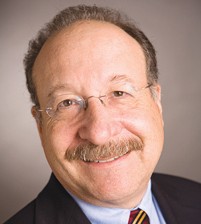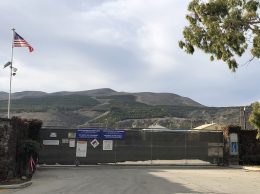Dubroff: Central Coast food producers must adapt
IN THIS ARTICLE
- Agribusiness Topic
- Henry Dubroff Author
By Henry Dubroff Friday, July 8th, 2016

Henry Dubroff
Agriculture on the Central Coast is in the midst of a rapid transformation.
Regulation, drought and the soaring demand for locally produced food are forcing farmers across the region to adapt or shut their doors.
The players who survive will likely be more sustainable and much more efficient. Curiously, they will likely reach markets that are both more local and more global.
That’s my takeaway after watching this year’s developments on the agribusiness scene. Among the highlights:
• Los Angeles billionaires Stewart and Lynda Resnick ran into a firestorm of negative publicity after the widely reported destruction of old growth oak trees in Paso Robles in a bid to expand the grape plantings at Justin Winery. They quickly backed off and offered to make amends but the public remains skeptical.
• Limoneira took the wraps off an expanded, $26 million packinghouse in Santa Paula that moves three times the volume of lemons with 60 percent less labor, according to Chief Operations Officer Alex Teague.
• Fires in remote areas of Santa Barbara and Ventura counties underscored the impact of the drought on forested areas as well as agricultural lands. Continued water woes for some municipalities underscored the need for more market-based solutions to water shortages.
• Saltwater intrusion into the Oxnard plain has created an existential threat to Ventura County’s largest crop, strawberries, and promises to increase costs as solutions are very expensive.
• The destruction of forests thanks to this year’s fire season is likely to increase the intrinsic value of the Central Coast’s citrus and avocado orchards. For the first time since the concept was floated, the cap-and-trade system for managing carbon emissions may register positive numbers for area agriculture.
Demand for locally sourced food — from fine-dining restaurants to food banks — is clearly having an impact. The brouhaha over the Resnick’s oak tree destruction really got legs when some well-known restaurants in San Luis Obispo made a public statement about not selling Justin Winery products in protest of the tree cutting. On the other hand, Limoneira’s ability to move its products all over the world at lower cost, thanks to the new packing house, shows that markets are global and local at the same time.
Finally, there is the question of food and food production. In order for our regional farmers to succeed they need to do more than grow, harvest and ship products. They need some flexibility in production to produce olive oil, wines that can command premium pricing and other artisan products derived from raw farm output.
The ability of farmers to move products up the agribusiness food chain is important to preserving the very farmland we value so highly. It’s also the key to finding new and better jobs for farm workers as the field work so prevalent today gets more and more highly automated.
U.S. Treasury yields falling
How low can they go?
That’s the question just about everybody on Wall Street seems to be asking this summer, as the yield on 10-year U.S. Treasury securities drops to historically low levels.
The closely watched 10-year yield, used as a benchmark for home mortgages among other things, dropped as low as 1.31 percent on July 6 before closing at 1.38 percent — the second day in a row for a closing below 1.4 percent.
That’s an extraordinarily low number and one with vast negative implications. Low rates put pressure on the banking system, they erode the savings of people trying to live on interest and Social Security and they inculcate a feeling of falling behind that’s become a theme of the acrimonious political season.
A flight to highest-quality government bonds in the wake of the Brexit vote has contributed to the swoon in yields.
Judging by the continued political upheaval in rudderless Britain, the travails of Italian banks in Europe and turmoil in the rest of the world, it’s possible we may not have tested the bottom for 10-year Treasury yields.
• Reach Editor Henry Dubroff at hdubroff@pacbiztimes.com.
Related Articles
 Friday, October 14th, 2022
Friday, October 14th, 2022










